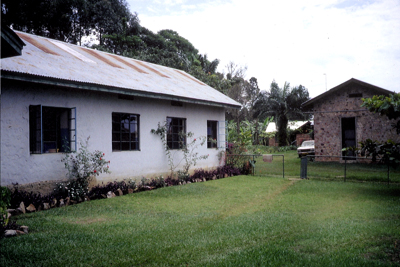THE ORPHANAGE
In Africa HIV is still very prevalent, including in Tanzania, where approx. 1 in 20 adults are living with the virus. Despite the fact that health education and medical treatments have improved in recent years, HIV/AIDS is still an enormous problem in the region. A large percentage of the 1.3 million orphans in Tanzania is a result of parents dying from AIDS. In addition, other causes for maternal deaths are complications from childbirth, high blood pressure, infections, severe malaria and other conditions.

The Ntoma orphanage was founded in 1950 and takes care mostly of infants and very small children. In their short lives most of them have had very tragic live stories, often losing both of their parents in short succession. The ability to transfer them to a hospital with sufficient equipment, staff and medication is typically impossible, due to the lack of transportation and the remote location. If grandparents or other relatives are around, they are often unable to care for the newborns, as a result of the extreme poverty. This situation results in small children being abandoned at a very young age, either placed in public places where they can be found easily, or dropped of directly at the orphanage. In rare cases newborns are also found just on the side of the road.
Typically the children stay at the orphanage until the age of three, after which they are returned to relatives, if there are any. Most often, though, they are either given up for adoption or placed in local foster families. Those foster families are often widows with own children, who are then supported financially by the local church or Help for Ntoma and some other community groups. There is no real government support, neither for individuals, nor for orphanages or community organizations.
